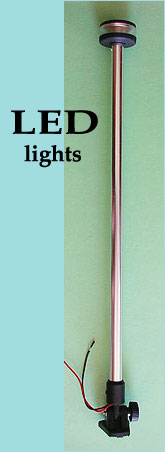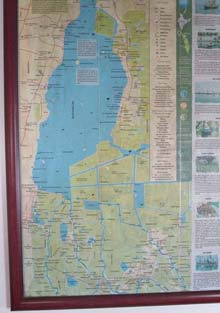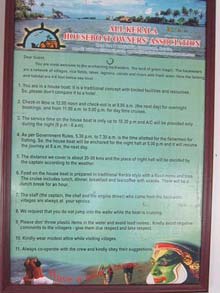|
As an amateur boat builder wherever I go I like to get on the water and sample the local delights, this year it was a three week holiday in India. The trip itself was an epic voyage of discovery and delight (providing you don't mind roughing it a bit). We went with a company called Intrepid on a guided tour across -the southern part of India and back. The starting point was Kochi in Kerala, which was quite hot to start with, having just arrived from cold grey England, but we soon acclimatised after a trip into the hills which was quite a bit cooler.
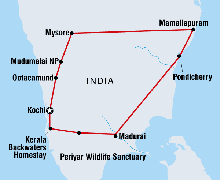 |
This is a map of our route, starting and ending in Kochi. The route took 15 days staying in most places one night, with some stays of two nights and one overnight on a sleeper train which was quite an experience. |
There is so much I could say about the trip, which was both exciting and fascinating, but I am aware that this is not a travelogue and some of you may be wondering 'Where are the boats'. At the end of the trip some of our group hired a houseboat for the day to relax and unwind, it was well worth it and gave some insight into an interesting way of life.
| This was a chart of the local area, as you can see by the straight lines a lot of the waterways are man made. |
Every captain has his rules, these are the rules of our boat, just common sense mainly. Designed to keep you safe and happy. |
The backwaters is made up of about 1000 kilometers of lakes, rivers and canals. Originally natural lagoons it was extended to provide paddy fields, and damed to prevent the ingress of salt water too far so that the water can be used for irrigation.
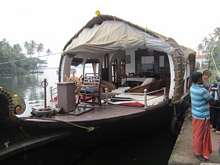 |
A view of the front of our boat take on departure. |
| Sorting out the fish from the nets, don't worry they aren't all this small. |
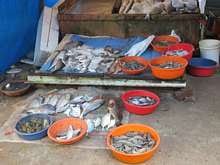 |
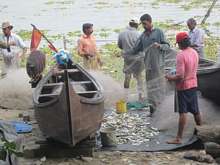 |
A selection of the fish for sale, some caught on the backwaters and some in the sea. |
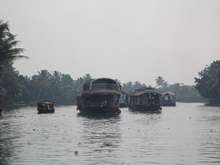 |
Starting to get a bit crowded, most of the time was spent on clear water, with just one or two boats in sight. |
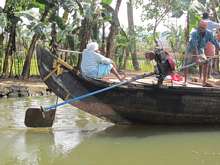 |
It's really a glorified strimmer, I have one just like this for cutting the long grass and weeds back home (well maybe a bit smaller). |
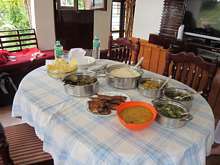 |
A sumptuous meal, providing you like rice and curry, this tastes better than any of the food served in the restaurants in England, the only thing I have noticed that takes a bit of getting used to is that they always over cook the fish. |
They don't believe in leaving much freeboard.
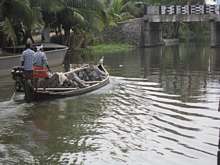
|
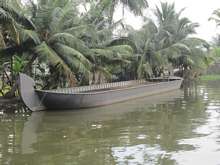
This is how most house boats started out before being converted, changing times and more tourism make it worthwhile to convert these barges into floating hotels. |
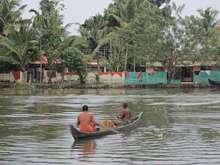 |
Local fishermen |
| One of the two bedrooms on the boat. |
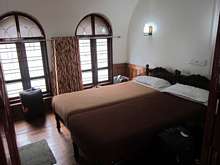 |
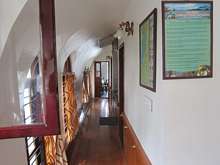 |
Looking aft from the lounge area. |
The skipper, where he should be on the sharp end of the boat? Only these boats have two sharp ends.
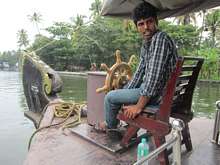
|
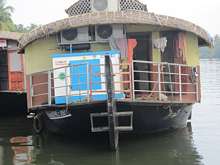
The back end of this boat packs quite a punch, in this case about 7.5kW, just because you are on the water it's no excuse to skimp on life's little luxuries. |
Smaller river transport.
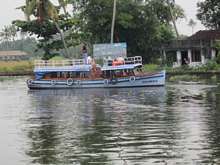
|
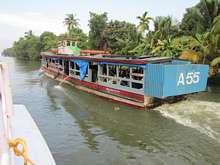
A local down river ferry stops at regular intervals to pick up and set down passengers. |
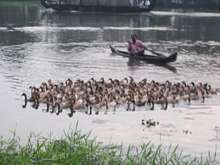 |
Bringing home the flock has a different meaning in Kerala. |
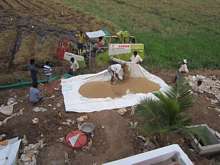 |
To harvest the rice, they use a much smaller combine harvester than for wheat and its on caterpillar treads to get traction in the mud. |
Seeing rice grown and harvested was a novel experience. Because of the warm weather the process is continuous so neighbouring fields will have crops in all stages of development from seedlings to harvest. The fields in this area are collectively owned and worked and although the picture below shows mechanical harvesting some workers cut the margins that the harvester cannot get to or the few stray wisps that have been missed.
The last night of our stay was in a local house owned by Mr Gupta, a local businessman. We were given a tour of the village, which is trying to encourage more tourism. In anticipation this, a new house had been built and we were to be the first occupants, unfortunately completion had been delayed by a month so the closest we got was a tour of the nearly finished building with marble interior and upstairs veranda.
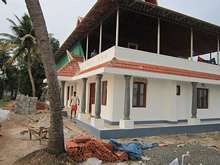 |
Mr Gupta's new homestay residence. |
The cross river car ferry on the right has two smaller boats tied together to provide a deck for vehicles, 20 minutes earlier it had about 80 schoolchildren with bicycles and neat green uniforms.
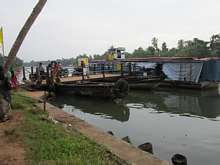
|
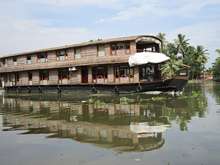
Some houseboats are very large with up to 9 bedrooms. |
Now how did that get here, looks like it would be more at home on the sea.
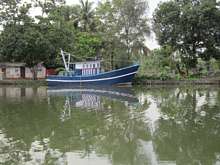
|
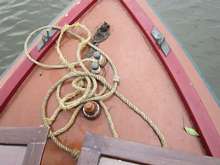
In India things like rope are worn to death, and then some more. |
Dredging is constantly needed in some parts of the backwaters where silt is deposited.
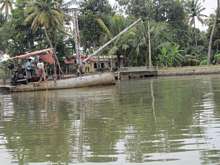
|
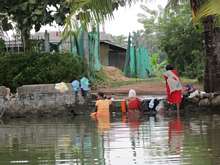
Laundry Kerala style, the housewife gets in the water and beats the clothes on the shore. |
A typical rural scene, with so many palm trees its not surprising that coconut goes into most of the local recipes.
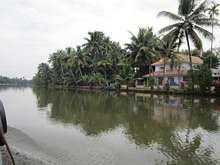
|
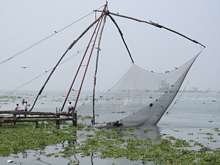
Chinese fishing nets in Kochi, you can get some idea of the scale by looking at the man standing next to the net. The prolific growth of water hyacinth is a problem in the local harbour. |
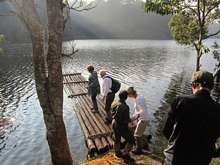
Whatever you do, book your trip through a reputable travel agent, these poor people got a houseboat with no house, and not much boat either by the look of it. |
Some things don't change - no matter where you go there is always a cormorant sitting on a buoy.
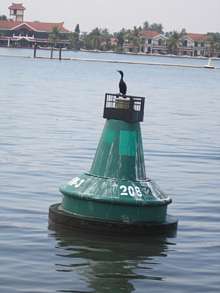
|
*****
Click HERE for a list of articles by Mike Machnicki
|



